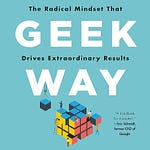As I often remind subscribers to Faster, Please!, predictions are hard, especially about the future. The economic boom of the 1990s came as a surprise to most economists. Equally surprising was that it ended so soon. Neither of these events caught Ed Yardeni off-guard. Some forecasters, Yardeni included, anticipated a new Roaring ’20s for this century… only to be interrupted by the pandemic. But is it too late for this prediction to become a reality? According to Yardeni, not at all.
Ed Yardeni is president of Yardeni Research, and he previously served as chief investment strategist at a number of investment companies, including Deutche Bank. He has additionally held positions at the Federal Reserve Bank of New York, Federal Reserve Board of Governors, and US Treasury Department. For more economic insights and investment guidance, visit yardeni.com.
In This Episode
The ’90s Internet boom (1:25)
The Digital Revolution (5:01)
The new Roaring ’20s (9:00)
A cautious Federal Reserve (14:24)
Speedbumps to progress (18:18)
Below is a lightly edited transcript of our conversation
The ’90s Internet boom (1:25)
Pethokoukis: Statistically speaking, the PC Internet boom that you first started writing about back in the early ’90s ended in 2004, 2005. How surprising was that to economists, investors, policy makers? I, to this day, have a report, a 2000 report, from Lehman Brothers that predicted, as far as the eye could see, we would have rapid growth, rapid productivity growth for at least another decade. Now, of course, Lehman didn't make it another decade. Was that a surprise to people that we didn't have an endless productivity boom coming out of the ’90s?
Yardeni: I think it definitely was a surprise. I mean, it was surprising both ways. Not too many people expected to see a productivity boom in the second half of the 1990s, which is what we had. I did, as an economist on Wall Street. More importantly, Alan Greenspan was a big promoter of the idea that the technology revolution would in fact lead to better productivity growth and that that might mean better economic growth and lower inflation. And it didn't look that way for a while; then suddenly the Bureau of Economic Analysis went back and revised the data for the late 1990s and, lo and behold, it turned out that there was a productivity boom. And then it all kind of fizzled out, and it raises the question, why did that happen? Why was it such a short lived productivity boom? And the answer is—well, let me give you a personal anecdote.
I worked at Deutsche Bank in New York in the late 1990s, and I had to be very careful walking down the corridors of Deutsche Bank in midtown Manhattan not to trip over Dell boxes. Everybody was getting a Dell box, everybody was getting the Dell boxes loaded up with the Windows Office. And when you think back on what that was able to do in terms of productivity, if you had a lot of secretaries on Selectric typewriters, Word could obviously increase productivity. If you had a lot of bookkeepers doing spreadsheets, Excel could obviously increase productivity. But other than that, there wasn't really that much productivity to be had from the technology at the time. So again, where did that productivity boom come from? It couldn't have been just secretaries and bookkeepers. Now the answer is that the boxes themselves were measured as output, and so output per man hour increased dramatically. It doesn't take that many workers to produce Dell boxes and Windows Office and Windows software. So as a result of that, we had this big boom in the technology output that created its own productivity boom, but it didn't really have the widespread application to all sorts of business model the way today's evolution of the technology boom is, in fact, capable of doing.
What you've just described, I think, is the explanation by, for instance, Robert Gordon, Northwestern University, that we saw a revolution, but it was a narrow revolution.
It was the beginning! It was the beginning of a revolution. It was the Technology Revolution. It started in the 1990s and it's evolved, it's not over, it's ongoing. I think a big development in that revolution was the cloud. What the cloud allowed you to do was really increase productivity in technology itself, because you didn't need to have several hundred people in the IT department. Now, with the cloud, one person can upgrade the software on hundreds of computers, and now we're renting software so that it automatically upgrades, so that's been a big contribution to productivity.
The Digital Revolution (5:01)
So perhaps I spoke too soon. I talked about that boom—that ’90s boom—ending. Perhaps I should have said it was more of a pause, because it seems what we're seeing now, as you've described it, is a new phase of the Digital Revolution—perhaps a broader phase—and, to be clear, if I understand what you've been speaking about and writing about, this isn't an AI story, this predates what we're seeing in the data now, it predates ChatGPT, when do you date this new phase beginning—and you mentioned one catalyst perhaps being the cloud, so—when did it begin and, again, what are the data markers that you've been looking at?
I don't remember the exact date, but I think it was 2011 where my little investment advisory got ourselves on the Amazon cloud, and that's been a tremendous source of productivity for us, it saves us a lot of money. We used to have a couple of servers on a server farm in the old days, and every now and then it would go down and we'd have to reach somebody on the server farm and say, “Would you mind turning it on and off?” Remember the word “reboot?” I don't remember the word “reboot” being used in quite some time. Amazon's never gone down, as far as I can recall. I think they've always had their systems in Virginia, and they had a backup somewhere overseas, but it's always worked quite well for us.
But now we're finding with some of the other software that's available now, we can actually cut back on our Amazon costs and use some of these other technologies. There's lots of technologies that are very user-friendly, very powerful, and they apply themselves to all sorts of different businesses, and, as you said, it's not just AI. I think the cloud—let's put it around 2011 or so—was a huge development because it did allow companies to do information processing in a much more efficient way, and the software gets automatically updated, and with what it used to take hundreds of people in an IT department to do, now you can do it with just one, which is what we, in fact, have, just one person doing it all for us. But I would say that's as good a point as any. But along the way here, what's really changed is the power of the software that's available, and how cheap it is, and how you can rent it now instead of having to own it.
That's a fantastic example, and, of course, we want to see these sort of examples at some point reflected in the data. And going through some of your writings, one period that you were very focused on was, we may have seen a bottom, maybe at the end of 2015, before the pandemic, where we saw the slowest, I think 20-quarter average… annual average growth rate of productivity.
0.5 annual rate.
But by 2019, leading into the pandemic, it tripled. Is the story of that tripling, is it the cloud? And that certainly has to be one reason why you, among other people, thought that we might see a new Roaring ’20s, right into the teeth of the pandemic, unfortunately.
Well, it's not so unfortunate, I mean, clearly nobody saw the pandemic coming, but we weathered the storm very, very well, and I don't think we can come to any conclusion about productivity during the pandemic, it was all over the place. At first, when we were on lockdown, it actually soared because we were still producing a lot with fewer workers, and then it took a dive, but we're now back up to two percent. We had a really, really good year last year in productivity. The final three quarters of last year, we saw above-trend growth in productivity. And so we're already now back up to two percent, which, again, compared to 0.5, is certainly moving in the right direction, and I don't see any particular reason why that number couldn't go to three-and-a-half, four-and-a-half percent per year kind of growth—which sounds delusional unless you look back at the chart of productivity and see that that's actually what productivity booms do: They get up to something like three-and-a-half to four-and-a-half percent growth, not just on a one-quarter basis, but on a 20-quarter trailing basis at an annual rate.
The new Roaring ’20s (9:00)
This forecast predates the word “generative AI,” predates ChatGPT, and, in fact, if I understand your view, it's even broader than information technology. So tell me a bit about your broader Roaring ’20s thesis and the technological underpinnings of that.
One of the developments we've seen here, which has been somewhat disconcerting, is the challenge to globalization. I'm a big believer in free trade, and the free trade creates more economic growth, but, on the other hand, we have to be realistic and realize that China hasn't been playing by the rules of the game. And so now, as a result, we're seeing a lot of production moving out of China to other countries, and we're seeing a lot of on-shoring in the United States, so we're building state-of-the-art manufacturing facilities that are full of robots and automation that I think are going to bring manufacturing productivity back quite significantly.
Everybody seems to be of the opinion that the reason productivity is weak is because of services. It's actually manufacturing. What happened is, when China joined the World Trade Organization back at the end of 2001—December 11th, 2001, to be exact—manufacturers said hasta la vista to the United States, and we've had absolutely no increase in industrial production capacity since that time, since 2001. And so companies basically gave up on trying to do anything, either expand capacity or improve productivity of manufacturing here, when they could do it so much more cheaply over in China.
I think what's really the most important thing that's changed here is, demographically, we've run out of workers. Certainly even in China, we don't have a growth in the working-age population. We don't have a growth in the working-age population here. And when it comes to skilled labor, that's even more the case, so there's tremendous incentive and pressure on companies to figure out, well, how do we deal with an environment where our business is pretty good, but we can't find the workers to meet all the demand? And the answer has to be productivity. Technology is part of the solution. Managing for productivity is another part of the solution. Giving workers more skills to be more productive is a very good use of money, and it makes workers sticky, it makes them want to stay with you because you're going to have to pay them more because they’re more knowledgeable, and you want to pay them more because you want to keep them.
I think a big part of the productivity story really has to do with the demographic story. China, of course, accelerated all that with the One Child Policy that, as a result, I kind of view China as the world's largest nursing home. They just don't have the workforce that they used to have. Japan doesn't have the workforce. Korea, Taiwan, all these countries… If you want to find cheap, young labor, it's still in Africa and in India, but there are all sorts of issues with how you do business in these countries. It's not that easy. It's not as simple as just saying, “Well, let's just go there.” And so I think we are seeing a tremendous push to increase productivity to deal with the worldwide labor shortage.
We have three really good quarters of productivity growth and, as you mentioned, economists are always very cautious about those productivity numbers because of revisions, they're volatile. But if this is something real and sustainable, it should also reflect in other parts of the economy. We should see good capital investment numbers for here on out if this is a real thing.
I think not only capital investment, but also real wages. Productivity is fairy dust. I mean it's a win-win-win situation. With better-than-expected productivity, you get better-than-expected, real GDP, you get lower-than-expected unit labor costs, which, by the way, unit labor costs, which reflect hourly wages offset by productivity, they're under two percent—or they're around two percent, I should say more accurately—and that's highly correlated with the CPI, so the underlying inflation rate has already come down to where the Fed wants it to be. This is not a forecast, this is where we are right now with unit labor costs. So there's a very strong correlation between productivity growth and the growth of inflation-adjusted compensation. So you can take average hourly earnings, you can take hourly compensation…
There are a bunch of measures of wages, and divide them by the consumption deflator, and you'll see on a year-over-year basis that the correlation is extremely high. And, theoretically—it's the only thing I learned when I went to college in economics that ever made any sense to me, and that is—people in a competitive marketplace—it doesn't have to be perfectly competitive, but in a relatively competitive marketplace—people get paid their real wage. The productivity the workers have, they get paid in their real wages, and we've seen, for all the talk about how “standards of living have stagnated for decades,” if you look at average hourly earnings divided by the consumption deflator, it's been going up 1.4 percent since 1995. That's a doubling of the standard of living every 40 years. That's pretty good progress. And if productivity grows faster than that, you'll get even a better increase in real wages.
If we don't have workers, if there's a shortage of workers—though, obviously, immigration puts a whole different spin on these things—but for what we know now in terms of the workers that are available that are allowed to work, they are getting paid higher real wages. I know that prices have gone up, but people sometimes forget that wages have also gone up quite a bit. But again, it's fairy dust: You get better real growth, you get lower inflation, you get real wages going up, and you get better profit margins. Everybody wins.
A cautious Federal Reserve (14:24)
In the ’90s, we had a Fed chairman who was super cautious about assuming a productivity boom, but eventually saw the reality of it and acted accordingly. It seems to me that we have a very similar such situation where we have a Federal Reserve chairman who is certainly aware of these numbers, but seems to me, at this point, certainly reluctant to make decisions based on those numbers, but you would expect that to change.
Yeah, well, I mean if you just look at the summary of economic projections that the Federal Open Market Committee… that comes out on a quarterly basis reflecting the consensus of Fed Chair Powell's committee that determines monetary policy, they're looking for real GDP growth of less than two percent per year for the next couple of years, and they're obviously not anticipating any improvement in productivity. So I think you're right, I think Fed Chair Powell is very much aware that productivity can change everything; and, in fact, he's talked about productivity, he knows the equation. He says, “Look, it's okay to have wages growing three percent if inflation's two percent.” Then he implied, therefore, that productivity is growing one percent. So he's basically in the one percent camp, recognizing that, if productivity is more than that, then four percent wage growth is perfectly fine and acceptable and non-inflationary. But at this point he's, in terms of his pronouncements, he's sticking to the kind of standard line of economists, which is, maybe we'll get one percent, and if we get one percent and the Fed gets inflation down, let's say to only two-and-a-half percent, then wages can grow three-and-a-half percent, and right now wages are growing at a little bit above. I think we're growing more like four percent, so the wage numbers aren't there yet, but they could be the right numbers if, in fact, productivity is making a comeback.
If we hit productivity gains of the sort you've talked about—three percent, four percent by the end of the decade—that is a radically different-looking economy than what the Fed, or the CBO, or even a lot of Wall Street firms are talking about. So it's not just this statistic will be different; we're looking at really something very different. I would assume a much higher stock market; I'm not sure what interest rates look like, but what does that world look like in 2030?
These are all good questions, they’re the ones I'm grappling with. I mean, should interest rates be lower or should they be higher? It’s the so-called real interest rates, so if the economy can live with a Fed funds rate of, let's say five and a half percent—five and a quarter, five and a half percent, which is what it is now—and the bond yield at four and a half percent and the economy is doing perfectly fine and inflation's coming down, and it's all because productivity is making comeback, then those rates are fine. They're doing their job, they're allocating capital in a reasonable fashion, and capital is going to get allocated to where capital should go. You mentioned before that, in order to increase productivity, we are going to need more capital investments.
Here the Fed has raised interest rates dramatically, and most of the economists said, “Oh, that's going to lead to a big drop in capital,” because capital spending is dependent on interest rates, and that hasn't happened at all, really, because the technology capital spending—which now, in current dollars, technology capital spending accounts for about 50 percent of capital spending in nominal terms. You can't do it in real terms because there's an indexing problem. But in nominal terms, half of capital spending is technology. And by the way, that's an understatement because that's information technology, hardware, it's software and R&D. It doesn't even include industrial machinery, which is mostly technology, hardware and software these days. And even the trucking industry, the truck is sort of the device, and then there's a software that runs the device logistics. There's so many areas of the economy that have become very high-tech that people still think of as a low-tech industry.
Speedbumps to progress (18:18)
If this doesn't happen. Well, I suppose one thing we could say may have happened is that we've really overestimated these technologies and they're not as transformative. But let me give you two other things that people might point to as being—and you've written a bit about these—that could be speed bumps or barriers. One: debt, possible debt crisis. And two: this energy revolution, climate change transition, which we really have a lot of government involvement and a lot of government making decisions about allocating resources. So what is the risk that those two things could be a slow things down, speed bump, or what have you?
There's three issues that you're raising. One is sort of the private sector issue of whether a lot of this artificial intelligence and technology stuff is hype, and it's not going to have the impact on productivity. The other one, as you mentioned, is the two government issues, government’s meddling in the climate change policies, and then the government having this irresponsible fiscal excesses.
With regards to artificial intelligence, even though I should be a cheerleader on this, because I should say, “See, I told you so…” I have been telling people I told you so because I said, I'll tell you when the stock market started to discount the Roaring ’20s was November 30th, 2022 when Open AI introduced ChatGPT, and that's when these AI stocks went crazy. A week later I signed up for the $20 a month version of ChatGPT, figuring, “This is great! I'm not going to have to work anymore. This is going to do all my writing for me. I'll just ask it the question and say, ‘What do you think we should be writing about this? Go ahead and write about it.’” Well, it took me more time to correct all the errors for what it produced than it would've taken me just to write the damn thing.
So I kind of cooled off to chat GPT, and I come to the conclusion that, from what I see right now in terms of what is available to the public and what's tied to the internet, it's really autofill on speed and the steroids. You know when you type Word and sometimes it guesses what you're going to say next? That's what this thing does at the speed of light. But, you know, “haste makes waste,” as Benjamin Franklin used to say, and it makes a lot of mistakes. And, by the way, garbage in, garbage out. It could create even more garbage on the internet because I've seen situations where it starts quoting its own sources that would never have existed in the first place. So there's some really funky stuff when you have it in the public domain.
But I think that when you have it sort of segmented off and it only has the data that you need for your specific industry, and it's not polluted by other the open source ability to take any data, I think it may very well work very well. But it's basically just a really fast, lightning-speed calculations. So I think it has lots of potential in that regard, but I think there is a certain amount of hype. But look, so much money is being spent in this area. I can't believe it's all going to go for naught. I mean, we saw a lot of money spent in the late 1990s on internet and dotcoms and all that. The internet's still here, but the dotcoms are gone.
With regards to the government policies, I have this very simplistic view that it's amazing how well this country has done despite Washington. Washington just keeps meddling and meddling, it just keeps picking our pockets, keeps interfering, comes up with industrial policies that, to a large extent, don't work. And yet, the economy continues to do well because working stiffs like you and me and people listening in, that's what we do for a living: we work. We don't have time for politics. So the politicians have plenty of time to figure out how to pick our pockets. Well, we have to just figure out, “Okay, given their meddling, how do we make our businesses better, notwithstanding these challenges.” Maybe it's really more my hope that we somehow in the private sector figure out how to keep doing what we're doing so well, including increasing productivity, in the face of the challenges that the government poses with its policies.
But then, if we are successful in the private sector at creating good productivity growth that gives you better real GDP growth, that real growth is one way to reduce the debt burden. It doesn't make it go away and it would be a lot better if we didn't have it, but some of these projections of how this debt is going to eat us all up may be too pessimistic about their assumptions for economic growth. But look… I guess I had a happy childhood, so I tend to be an optimist, but I can't say anything good at all about this deficit problem. And we did get a little glimpse in August, September, October, of what happens when the bond market starts to worry about something like supply. It worried about it for three months, and then lower inflation and less supply of long-term bonds helped to rally the bond market. But here we are back at four and a half percent, and if we do have some more fears about inflation coming back, then we could very well have a debt crisis more imminently. People like Ray Dalio has been saying that we're under verge of getting it. I think it's an issue, but I don't think it's an issue that's going to be calamitous at this time.
The problems people talk about, you have the skepticism about free enterprise, or the skepticism about trade, and immigration. I would like to see what this country looks like in 2030 with the economic scenario you've just outlined: Strong real wage growth. Maybe it's too simplistic, but I think people being able to see in their everyday lives, big gains year after year, I think the national mood would be considerably different.
Well, I think, even now, if you look at real consumption per household, it's $128,000, it's at an all-time record high. And yeah, I guess the rich might be gluttons and might eat more than the rest of us, and maybe they have bigger and more houses and cars, but there just aren't enough of them to really explain how it could possibly be that real consumption per household is at an all-time record high. And I know that's materialistic, but I can't think of a better way to measure the standard of living than looking at real consumption per household: All-time record high.
Micro Reads
▶ Business/ Economics
Meta, in Its Biggest A.I. Push, Places Smart Assistants Across its Apps - NYT
Google streamlines structure to speed up AI efforts - FT
Tesla’s Layoffs Won’t Solve Its Growing Pains - Wired
▶ Policy
Put Growth Back on the Political Agenda - WSJ
Regulate AI? How US, EU and China Are Going About It - Bberg
Three ways the US could help universities compete with tech companies on AI innovation - MIT
▶ AI/Digital
The AI race is generating a dual reality - FT
Searching for the Next Big AI Breakthrough at the TED Conference - Bberg
These photos show AI used to reinterpret centuries-old graffiti - NS
Environmental Damage Could Cost You a Fifth of Your Income Over the Next 25 Years - Wired
AI now surpasses humans in almost all performance benchmarks - New Atlas
▶ Biotech/Health
A new understanding of tinnitus and deafness could help reverse both - New Scientist
Beyond Neuralink: Meet the other companies developing brain-computer interfaces - MIT
▶ Robotics
Hello, Electric Atlas: Boston Dynamics introduces a fully electric humanoid robot that “exceeds human performance” - IEEE Spectrum
▶ Space/Transportation
NASA may alter Artemis III to have Starship and Orion dock in low-Earth orbit - Ars
▶ Up Wing/Down Wing
Technological risks are not the end of the world - Science
▶ Substacks/Newsletters
Five things to be optimistic about in America today - Noahpinion
Who Governs the Internet? - Hyperdimensional
Meta is Surprisingly Relevant in Generative AI - AI Supremacy
Larry Summers isn’t worried about secular stagnation anymore - Slow Boring














🦁 My chat (+transcript) with investment strategist Ed Yardeni on his optimism for a Roaring 2020s